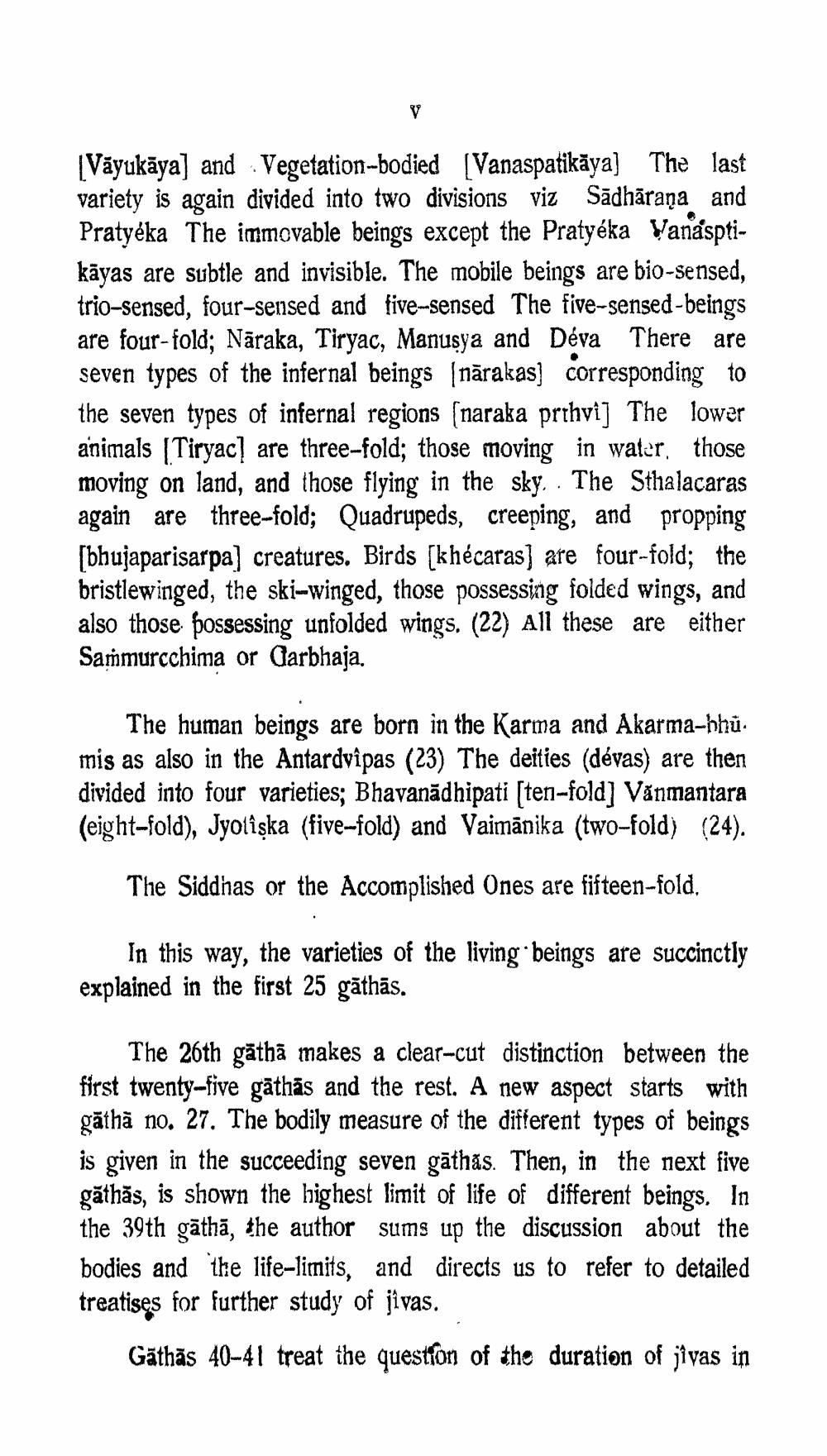________________
[Vāyukāya) and Vegetation-bodied [Vanaspatikāya] The last variety is again divided into two divisions viz Sādhāraṇa and Pratyéka The immovable beings except the Pratyéka Vanasptikāyas are subtle and invisible. The mobile beings are bio-sensed, trio-sensed, four-senised and five-sensed The five-sensed-beings are four-fold; Nāraka, Tiryac, Manusya and Déva There are seven types of the infernal beings (nārakas) corresponding to the seven types of infernal regions (naraka prthvi] The lower animals (Tiryac] are three-fold; those moving in water. those moving on land, and those flying in the sky.. The Sthalacaras again are three-fold; Quadrupeds, creeping, and propping [bhujaparisarpa) creatures. Birds (khécaras) are four-fold; the bristlewinged, the ski-winged, those possessing folded wings, and also those possessing unfolded wings. (22) All these are either Saṁmurcchima or Garbhaja.
The human beings are born in the Karma and Akarma-hhü. mis as also in the Antardvîpas (23) The deities (dévas) are then divided into four varieties; Bhavanādhipati (ten-fold) Vánmantara (eight-fold), Jyotiska (five-fold) and Vaimānika (two-fold) (24).
The Siddhas or the Accomplished Ones are fifteen-fold,
In this way, the varieties of the living beings are succinctly explained in the first 25 gāthās.
The 26th gāthā makes a clear-cut distinction between the first twenty-five gäthäs and the rest. A new aspect starts with gāthā no. 27. The bodily measure of the different types of beings is given in the succeeding seven gāthas. Then, in the next five găthās, is shown the highest limit of life of different beings. In the 39th gāthā, the author sums up the discussion about the bodies and the life-limits, and directs us to refer to detailed treatises for further study of jivas.
Gāthās 40-41 treat the question of the duration of jiyas in




